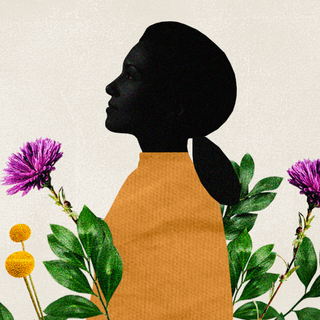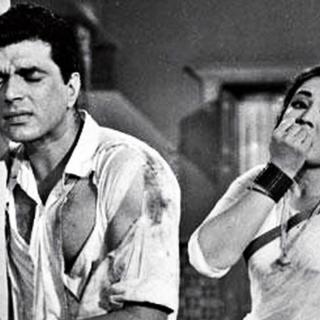The dresses! The drama! The swooning declarations of love! There’s a reason we can’t get enough of regency television, and it has to do with how we romanticize bygone times. When Matthew Macfadyen looked earnestly into Keira Knightley’s eyes and said, “I love you, most ardently,” a generation of women collectively dissolved into puddles. A month ago, when Bridgerton’s famed viscount Anthony told Kate she is the “object of my every desire,” social media fan art promptly exploded. Now, the first look of yet another Regency romance, Mr. Malcom’s List, starring Freida Pinto, has begun to make the rounds.
It has to do with a notion of romance that isn’t compatible with the present. But for all that, what is it about this period of time that sets so many hearts aflutter? “It’s a period of romance, balls, hushed corners, social etiquette, and dazzling fashion. There’s an element of escapism here, yes, in that it appeals to the romantic side of all of us,” Emma Butcher, a lecturer in 19th-century literature at King’s College London, told Cosmopolitan.
But, there’s a caveat: “Period dramas are dreamscapes, not documentaries… We’re attracted to the glitz and glamour of the period, but … there are elements that are slightly unrealistic or reimagined,” Butcher added. Indeed, the Regency era technically only spans a decade: between 1811 and 1820. It marked the rule — nay, the regency — of George IV, who took over after his father was declared too mentally unsound to rule. This period is said to have vastly improved things for the aristocracy — making Regency stories all about the historical equivalent of the 1% today.
It’s a bit like watching an un-ironic version of Succession, if the Roy family were robber barons from the 17th century instead. Except, this show exists already, and it’s called The Gilded Age.
Related on The Swaddle:
How Historical Fiction on TV Rewrites Race – For Better and for Worse
We knew this already, but what does it mean for us to romanticize candyfloss about people who, had we lived alongside them, wouldn’t have deigned to toss a fraction of a side glance at us? It’s a strange combination of a warped conservative longing for the “good old days,” and an escapist tendency during times of duress. Take the fact that Downton Abbey became the most popular drama on television shortly after the 2008 financial crisis; or the fact that Bridgerton broke all streaming records when it was released during the thick of the pandemic.
We look to immerse ourselves in a world of hedonism and luxury when we ourselves are feeling at our lowest, it would seem. But the popularity of Regency dramas because of this is prompting a spate of historical reimaginings that are in line with calls for representation and diversity. There are more people of color populating the prim English landscapes we have come to love despite ourselves, and shows like Bridgerton have come to deliver just that. But this comes at the risk of glossing over some of the worst historical injustices to have ever happened, even sanitizing the historical record itself.
Still, there’s more to Regency dramas than just the dazzle and luster. Scholars note that, following in Austen’s footsteps, these dramas “centralize female subjectivity, desires, and apprehensions to an unusual extent.” Indeed, characteristic of these plots are women with sparkling wit, who are equal to the task of banter and wisecracks, and who carry themselves with sophisticated self-awareness. There is also the female gaze which helps matters greatly: where charismatic heroes are looked at from the perspective of a woman’s desire.
We may have Austen and other literary influences to thank for this, too. But the popularity of the genre still begs the question: is a decade of aristocratic frolicking really the best we can do to undo the male gaze? At best, the fact that we find ourselves in what is being called the “golden moment” for period dramas can be put down to a pure want for escapism. At worst, it signals a subtle, conservative undercurrent running through the veins of liberal entertainment culture — which would then call for more attention to the stories we tell about and to ourselves.




